From Giant Bamboo monoculture to “Food Jungle” polyculture | Rewilding Update
Feun Foo Permaculture & Rewilding Update (October 2023) --- [Estimated reading time: 15 min.]
Every four months, we used to post updates on the progress of our reforestation efforts on the upper part of our land to our Facebook page, but since we haven’t been very consistent with those updates, and Facebook is, well, Facebook, I thought it might be worthwhile to publish a more detailed update here (thanks to Leon for the inspiration!). I will focus mostly on the upper half of the garden, since we have the most consistent records of it and the changes there have been the most pronounced. The bottom half of our land is more like a “regular” Food Forest/Permaculture Orchard.
In the following, you’ll also find an abundance of exclusive pictures from our land - a rare and intimate insight into the emerging Food Jungle!
We’ve been a bit lazy with “content creation” in the past few months (social media is a dark place these days, and we’re subsistence farmers, not “influencers”), but we thought now is a good time for another quick update.
After five (short) years, the canopy in the upper part of the land is either closing or already closed, except in the few places where we have some vegetable beds or where we plan on building a hut.

It’s shady and cool under the trees, as the land slowly transitions into secondary forest. But it is getting crowded, and, as expected, we might have to take down one or two emergent trees to use as mulch/biomass and to create breaks in the canopy through which more sunlight can enter.
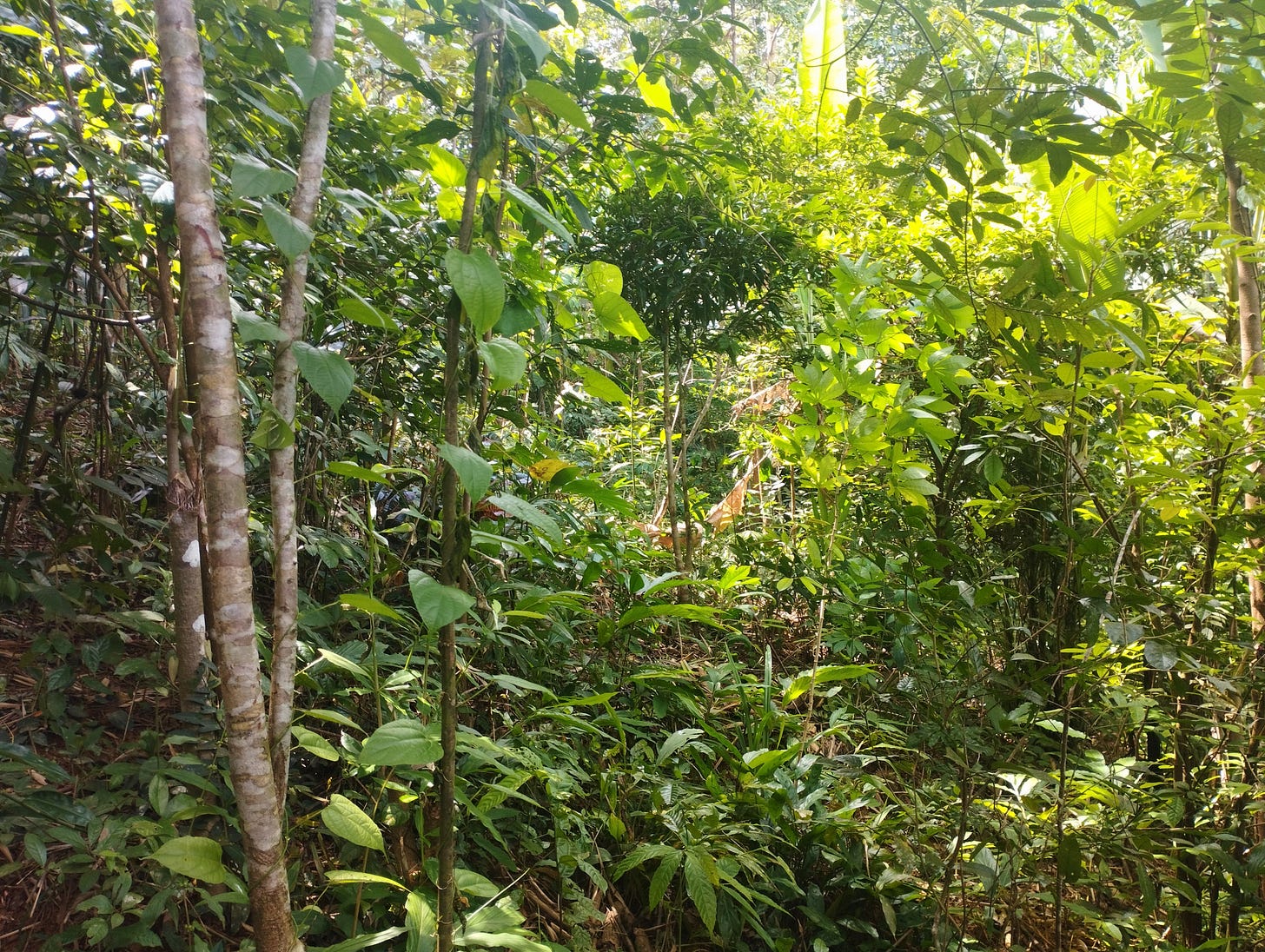
The only kind of work to do right now is good ol’ chop’n’drop, in preparation for dry season (to have as much mulch on the ground as possible) and because the previous mulch layer is pretty much gone, due to rapid decomposition during the heavy monsoon – and because of our chickens, who busily break down biomass on their daily foraging rounds.

The chickens forage happily in the upper part as well (at least in the areas where we cleared the underbrush a bit – they seem to avoid places that look too chaotic), and they love throwing leaf mulch around to look for insects, which helps to break down organic matter even faster. To stop the chicken from slowly moving all mulch downhill, we’ve created long barriers from bamboo branches along the contour of the slope, above which the leaf litter is caught and accumulates – in time, the resulting darker soil will be planted with a variety of understory crops to stabilize it, and the result will (hopefully) be shallow, naturally created terraces that slow down runoff rainwater.
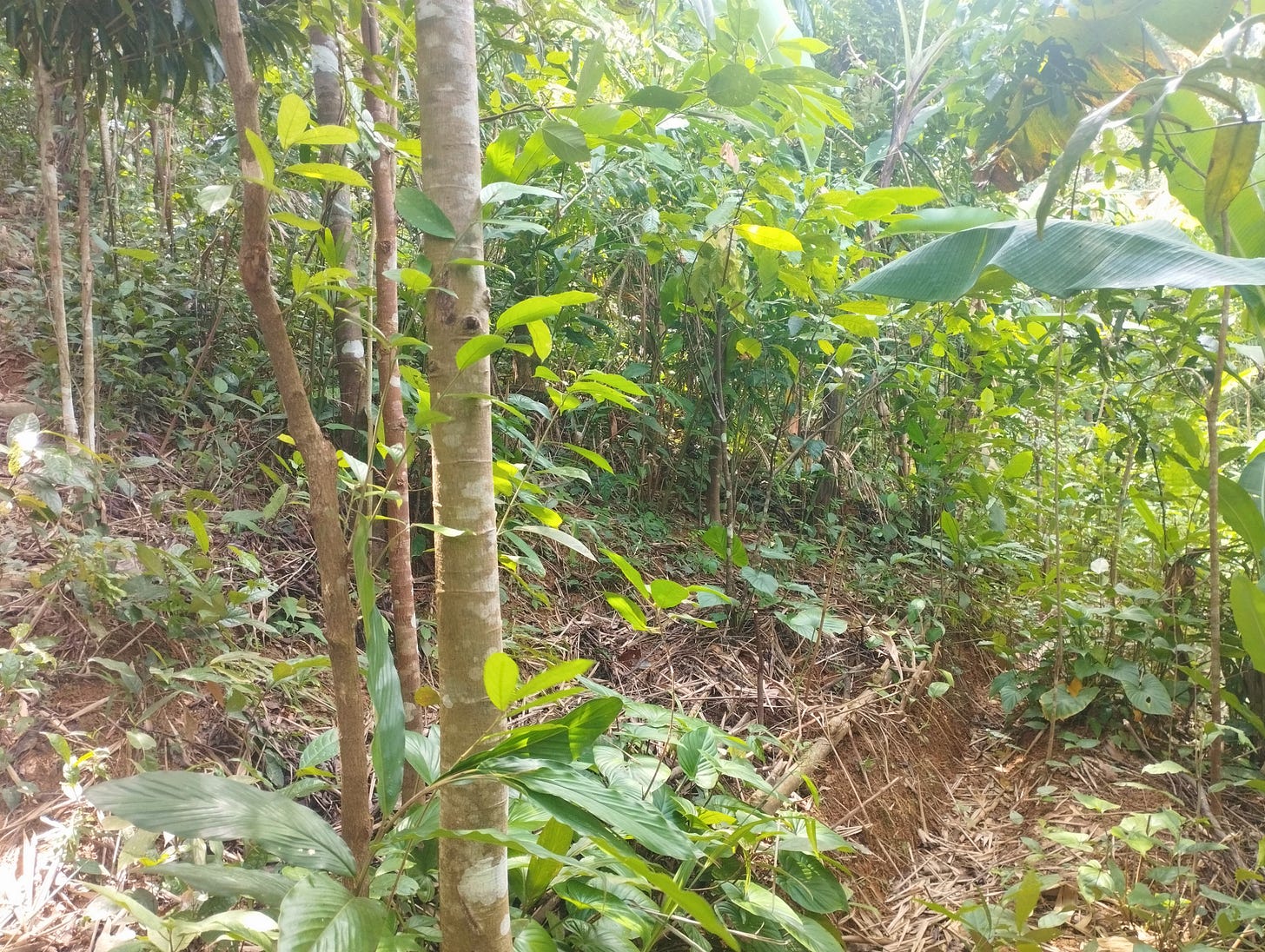
After the rains have stopped for about a month, we will finally start harvesting giant bamboo culms again, since the starch content is the lowest right after rainy season. So currently we prepare for that, clearing footpaths and the area around the clumps, so once it’s dry enough all we need to do is to start felling.
We’ve finished planting for this year, and it was already a lot less work than in previous years – slowly, the place is filling up, and there is not much more space left for new trees. We did plant a few more fruit trees up there (mostly safou and sapote mamey, both future seasonal staples), in the shade of fast-growing pioneers that will, in time, become mulch for the emerging fruit trees.

In terms of planting, in the past few months we’ve mostly filled in gaps with cardamom, ginger, black pepper and other understory crops. We also re-dug the few “forest garden beds” in the upper part and planted them with achira, one of our future staples, and a few other hardy vegetables and herbs. Expanding this area is in planning, but currently not possible due to the destructive Nature of our semi-feral chickens – all vegetable beds must be heavily fortified with bamboo branches to keep them from digging up our crops, so we have to wait with the creation of new beds until we start harvesting bamboo and have leftover bamboo slash.

In the “succession picture” at the beginning of this post, you can clearly see that the early successional niche for bananas is getting smaller: they were still much more prominent two years ago, but have by now almost all been shaded out. There are still quite some decent clumps, both wild and cultivated ones, but much less than in previous years. In response, we’ve cleared more land in the upmost part of the garden (not directly visible in the picture) to plant more bananas.
Another striking difference in the successional pictures is the rapid emergence of two individuals of our main biomass species, Acacia mangium, in the foreground of the last picture. Within two years, they grew from small shrubs into trees well over five meters tall. In terms of pure biomass, carbon tons per hectare, A. mangium is the second most effective tropical tree species (after eucalyptus, according to Ernst Götsch) – which is why we plant them in between fruit trees all over our land. Apart from being extremely fast-growing even in relatively poor soils, they don’t take up much space, are quite easy to cut down again, and make excellent firewood. We wait for them to produce seeds once, and then cut them back to mulch the surrounding fruit trees.
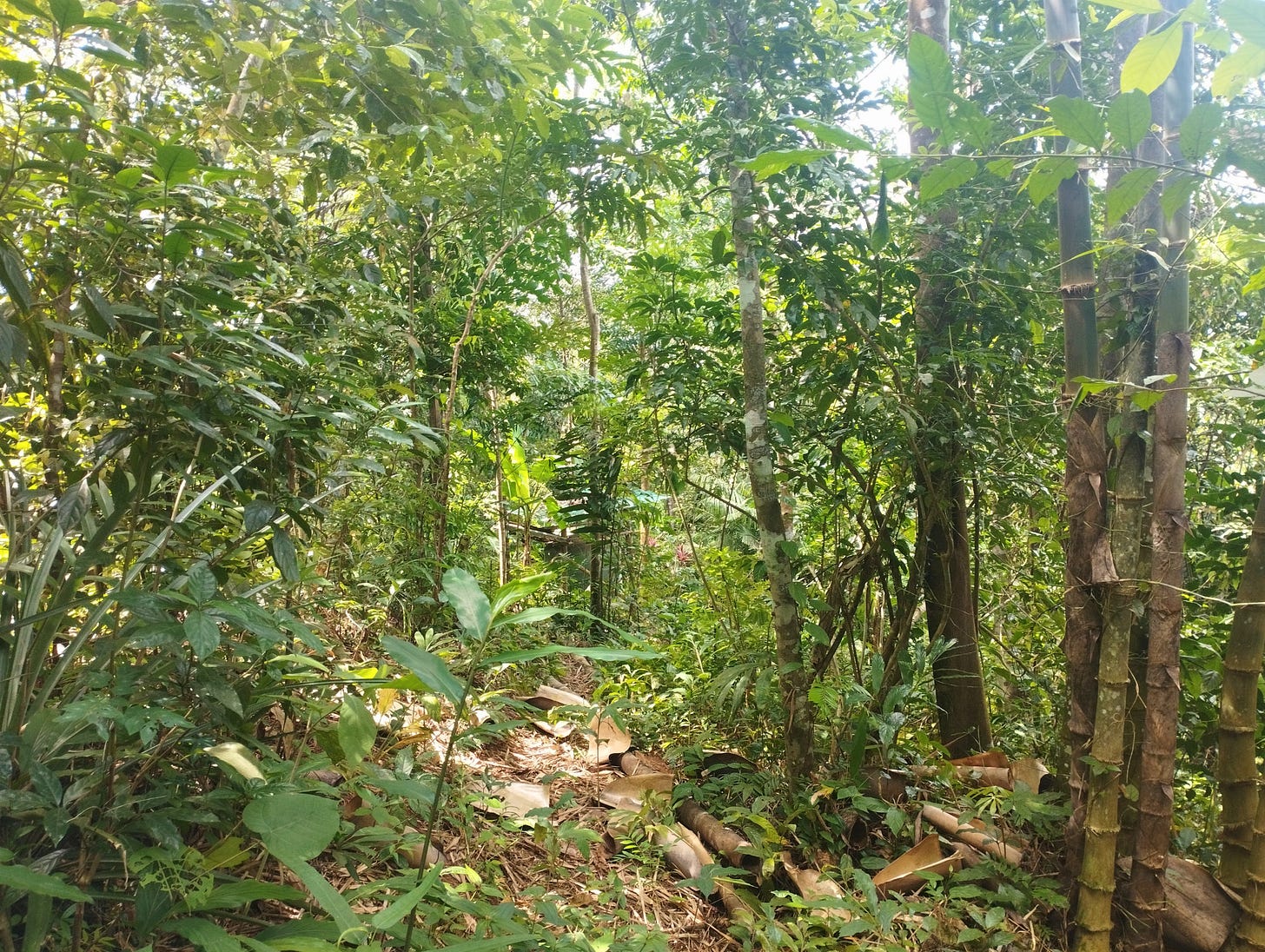
The soil now finally has enough leaf cover in most places. In the first year, the soil was covered in a deep mulch of bamboo leaves (that were left after initially clearing out the bamboo clumps), which quickly disappeared once rainy season started. We tried to cover the soil as good as possible with chop’n’drop, but in the first two years, there simply weren’t enough branches to completely cover the soil, so we let scrambling pioneer vines do their job (which is far from optimal, since they climb into the surrounding trees and need to be cut back constantly). But in the fifth year, the trees are large enough to produce sufficient leaf litter in most places, and whatever patches remain uncovered in between are mulched with the steadily pruned lower branches of the emerging canopy trees.
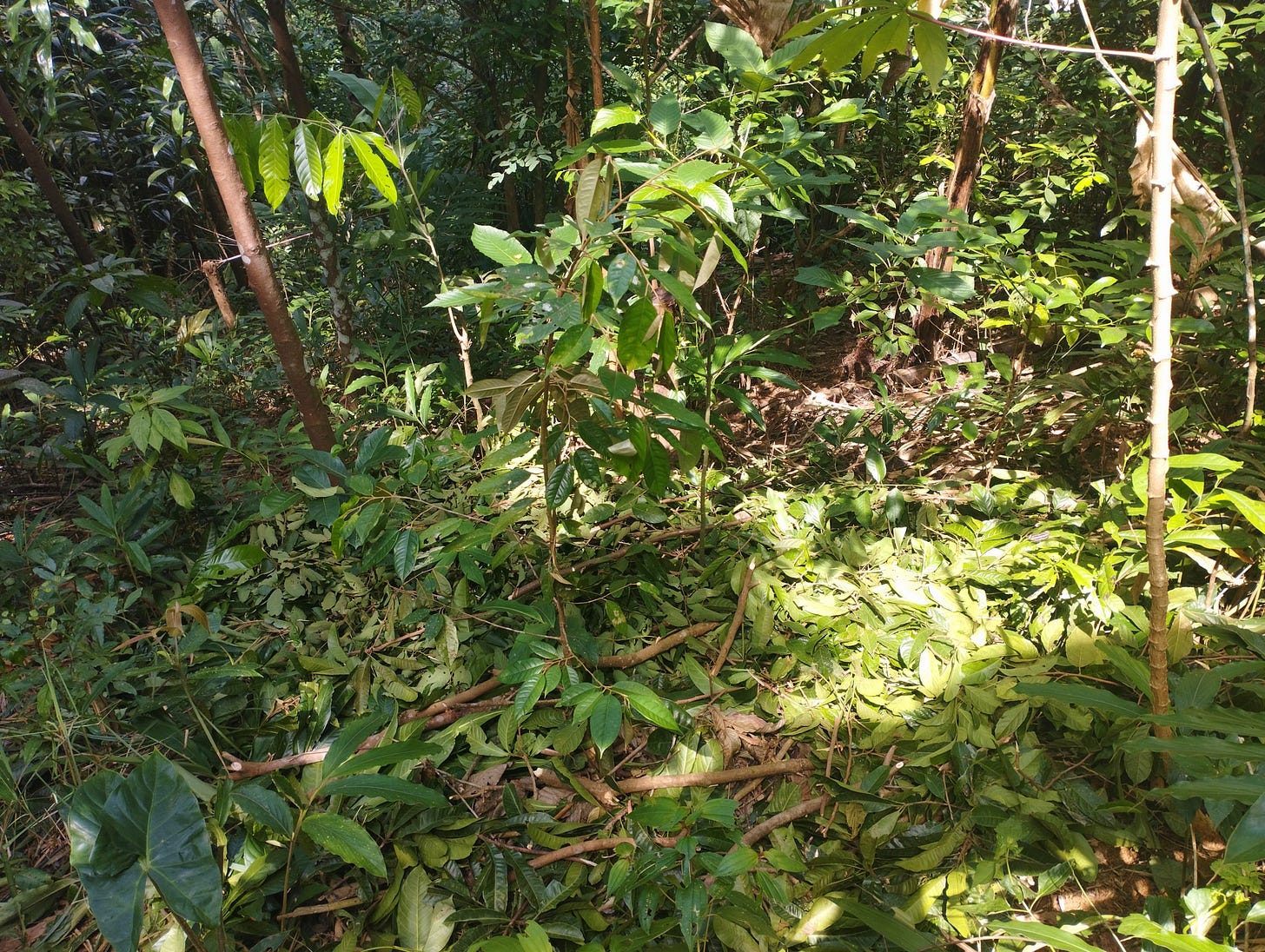
Most of the tall canopy species trees are a local wild mango (unrelated to Mangifera indica), the aforementioned A. mangium and a local species of Archidendron as nitrogen-fixers, and Carallia brachiata (a minor wild fruit), which we left standing during the initial clearing of the giant bamboo.

The end of rainy season is really productive in terms of plant growth (since there’s both abundant rain and sun for a few weeks), but there are no fruits in peak season at the moment. A few scattered abiu here, a rollinia or atemoya there, and a few sour oranges. The only fruit we eat every day are bananas and passion fruit – we call it the “Yellow Fruit Season”
Right now we don’t harvest anything in particular from the upper part, since fruit- and bamboo shoot season are both over, and the land slowly transitions into dry-season mode. Occasionally we forage a cardamom or an Amomum villosum shoot, a bunch of sword beans and inca nuts, some leafy greens, banana blossoms, a few rattan shoots – but that’s pretty much it.
The rattan is developing really nice in some areas, and in a few short years will be ready for harvest as a material for weaving and to tie things together.
We did harvest over 50 kilogram of wild berries – Antidesma montanum – which we processed into what will likely be well over a hundred liters of fruit wine. We’ve scaled up considerably and experimented a bit with the recipe this year, and the last batches of five-gallon bottles are still busily fermenting, but we’ve tried a few bottles of the first batch already and are very satisfied with the result. Call me a philistine, but I don’t think it deviates much from “real” red wine in terms of taste – it’s been a while since I had a glass of real wine, though. In time, this little side project will hopefully become an additional revenue stream to finance our project.
In terms of staple foods, this year we actually ate a lot more rice than in previous years, since we feel the urgency of having to prepare for the coming El Niño (and beyond). Nobody else here seems to care, nobody else seems to prepare, so – whether we like it or not – it is up to us to think about what will happen when grain prices skyrocket in the coming years. Since rice is now (still!) abundant and relatively cheap, we chose to propagate and replant almost the entire harvest of our own staples, to increase quantity as fast as possible, and to have a buffer once things get serious. Immediate self-sufficiency is sacrificed for future food security – at least that’s the plan. Shocks and disruptions to food systems can happen fast, and we want to have enough tubers and roots in the ground to help supply our immediate community if (or, better, when) push comes to shove. We are not sure if it will work out, but it’s all we can do for the moment.

After learning more and more about traditional Southeast Asian shifting cultivation over the last few years, we feel a bit sad that we didn’t use the opportunity to experiment a bit with slash-and-burn/fire farming once we cleared the land, but five years ago we were still greenhorns in terms of hill farming and were most concerned about possible erosion. Fire is a double-edged sword, so maybe it was better to play it safe – the conditions here are different as well, since we’re not working with deep, rich forest soil but with highly degraded and eroded subsoil.
We have started a few experimental plots on which we burned biomass prior to planting, but they are so far all located on the upmost part. Erosion is, at this stage, still a major concern, since rainy season here in the Rattan Vine Mountains is (for lack of a better term) a different beast.
Overall, the density of species directly useful for us is still a lot lower in the upper part, but we’ve come to accept that this will be the case for many more years. We have to focus on the lower half first, since it’s closer to the house, and thus easier to water and take care of. But the upper part supplies us with most of the firewood and most of the materials for construction, maintenance, fencing, trellis, small repairs and everyday handiwork.
As part of developing the concept we’ve termed ‘Primitive Permaculture,’ we reduced the “Five Zones” to a mere Three: “Swidden” (partly open fruit orchard with vegetables interplanted), “Secondary Forest” (source of fuel, materials, biomass, wild fruit and forest crops/products), and “Unmanaged Forest” along and beyond the border of our land.
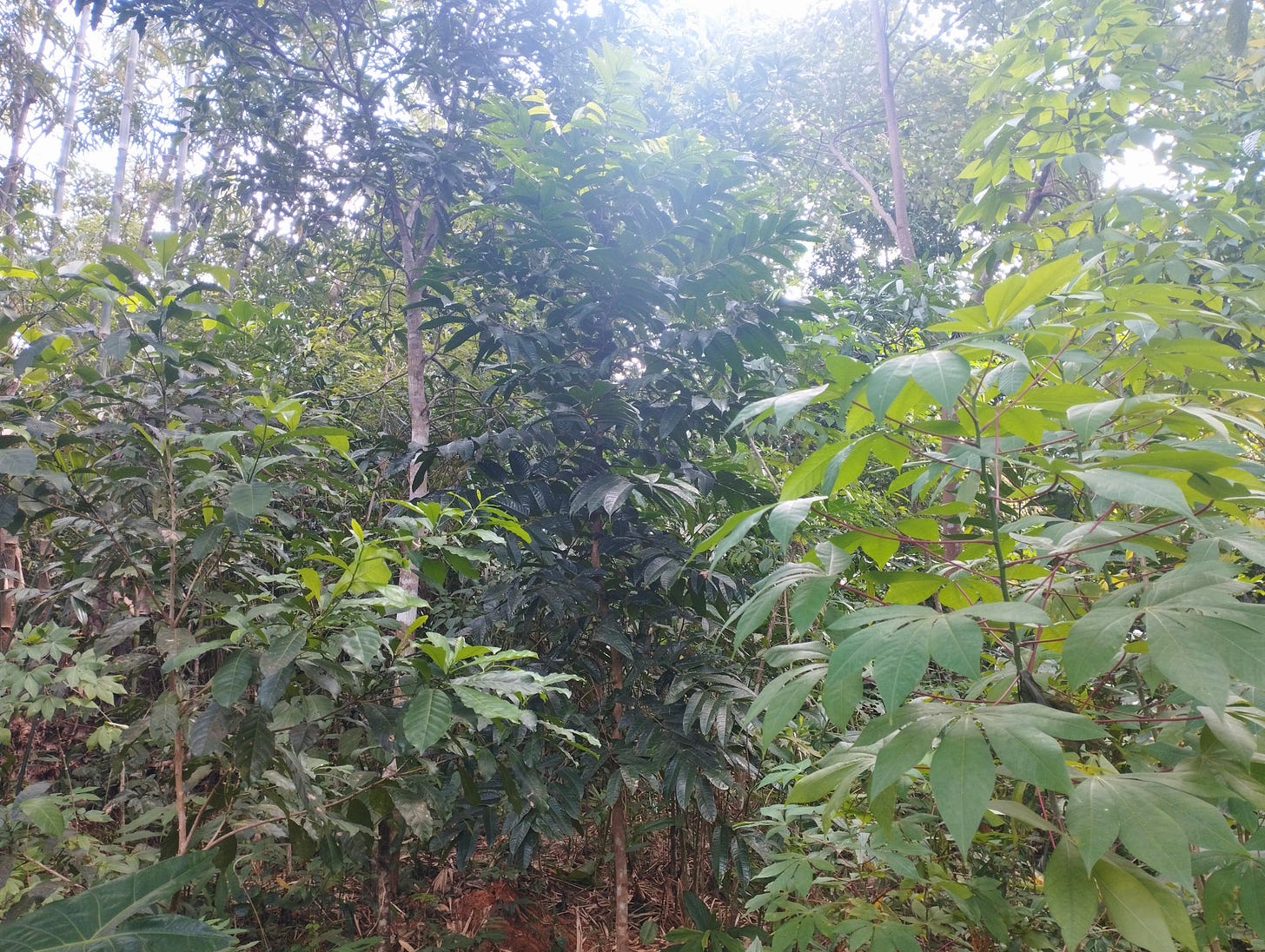
The upper part pictured and described here is our Zone Two, although the borders between Zone One and Two will likely blur over the next few years.
It would be really interesting to know how many tons of carbon the land has sequestered and stored already since we moved here, but we’re too lazy to measure, test and calculate, so suffice it to say that it’s probably “quite a lot!”
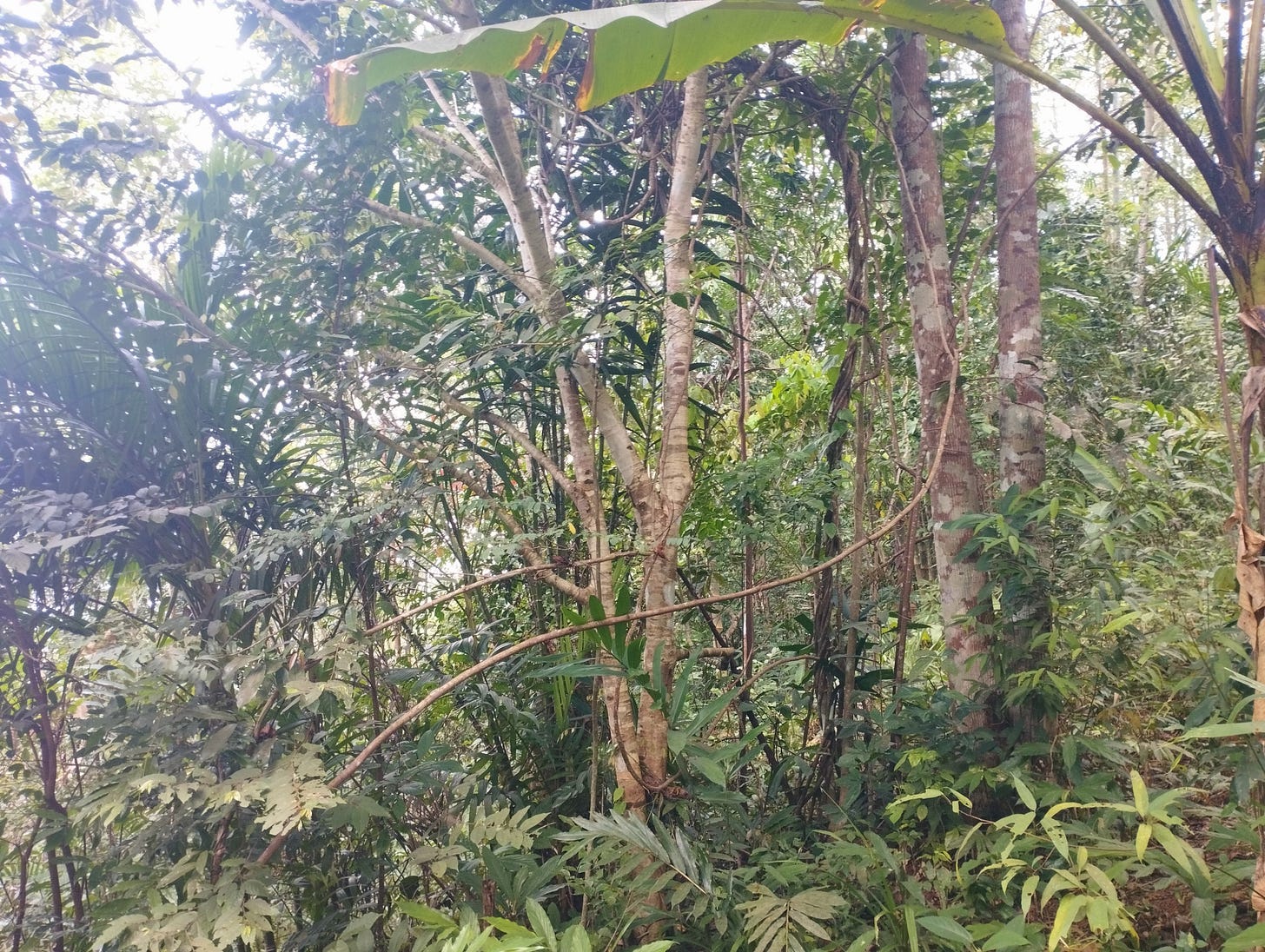
Direct climate action and restoration work on the scale we are doing here might seem minuscule in the greater scheme of things, but it definitely feels incredibly rewarding, especially in times like these. And as the world around us slowly descends into chaos, our garden is our fortress, our safe space, and our anchor in (biological) reality. What we do here is grounding ourselves, listening to the land, learning from it, and reforging that long-lost, ancient connection that, deep down, all of us crave.
In the next few years, we would love to be able to inspire more others, maybe host some local guests and volunteers, but so far there are still a few things we need to do in preparation for this. We likely have to renovate the accommodation for our guests (and make it slightly more “instagrammable” in the process – this seems to be an important factor in the current culture here), and we really need to focus more on our main vegetable beds around the house.
We started with really bad soil, and while the soil has gotten considerably better in the last years, we still don’t produce a lot of what are commonly understood to be “vegetables”: eggplants, peppers, gourds, squash, and domesticated greens. We eat a diet that’s high in tree crops, wild foods and jungle produce. For us two, the few meager chili plants that survived rainy season are enough to cover our needs, but potential guests would expect a bit more abundance and vibrance concerning edible crops they actually know and like.
Furthermore, society here hasn’t reached the tipping point at which more people realize that much more radical and drastic action is needed. So we prepare and wait, hoping that this social threshold will be crossed soon, and we can start what Thomas Berry has so aptly called “The Great Work.”
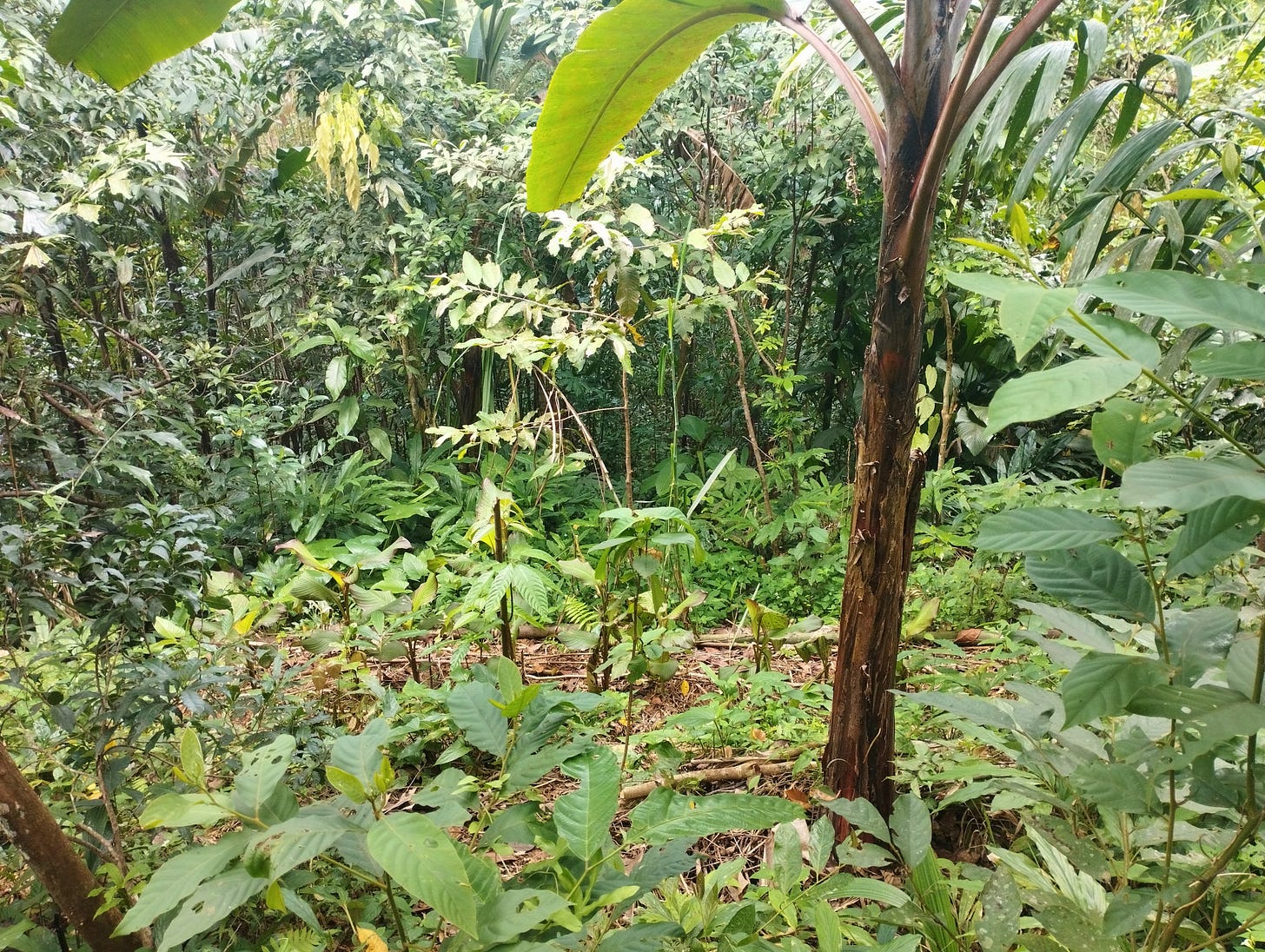
We’re living through difficult times, indeed, but how difficult things will get is, to a large part, up to us. Any efforts in adaptation and mitigation are much-needed, but sadly still insufficient and far from the scale required to actually make a difference. But work like this is so much more fun, so much more wholesome, rewarding, and deeply meaningful than anything the current system has to offer. And, all things considered, doing what we do is actually a pretty decent way of life, especially compared with wage labor (or dare I say slavery?).

If there is one wish we have for the next year, it is – as harsh as this sounds – that things get a lot more difficult for society at large. There is serious economic trouble brewing, and the currently developing El Niño is likely going to be pretty severe, affecting harvests and livelihoods worldwide. But only once “life in mainstream society” gets uncomfortable enough that not even the steady stream of cheap dopamine pouring from our smartphones can curb the anxiety, stress, frustration, loneliness, depression, and craving for real connection, maybe finally more people start looking for real alternatives. If we can pass the point at which the organic, dirty, sweaty, exhausting (but also exciting and exhilarating) Life with the Land becomes more attractive than toiling one’s life away in the city while being forced to eat toxic food and breathe toxic air, we would finally sense opportunity.
So, in light of the occasion: Here’s to bad times, and may they wake us up from our slumber!
And now, a few pictures of the lower half of our garden (mostly without captions, since it’s just too “chaotic” and thus too difficult to explain):

(Next update comes in four months!)



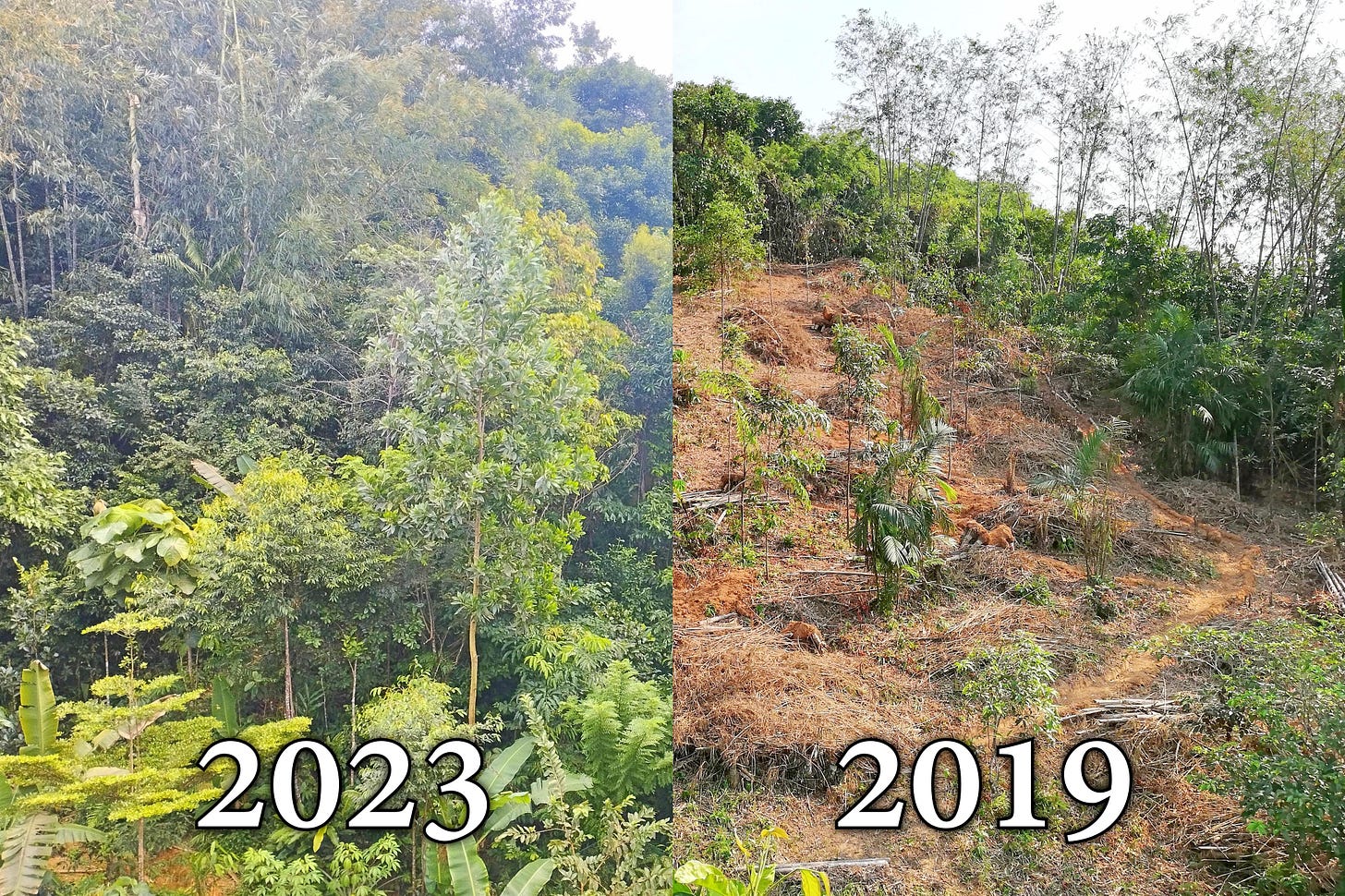
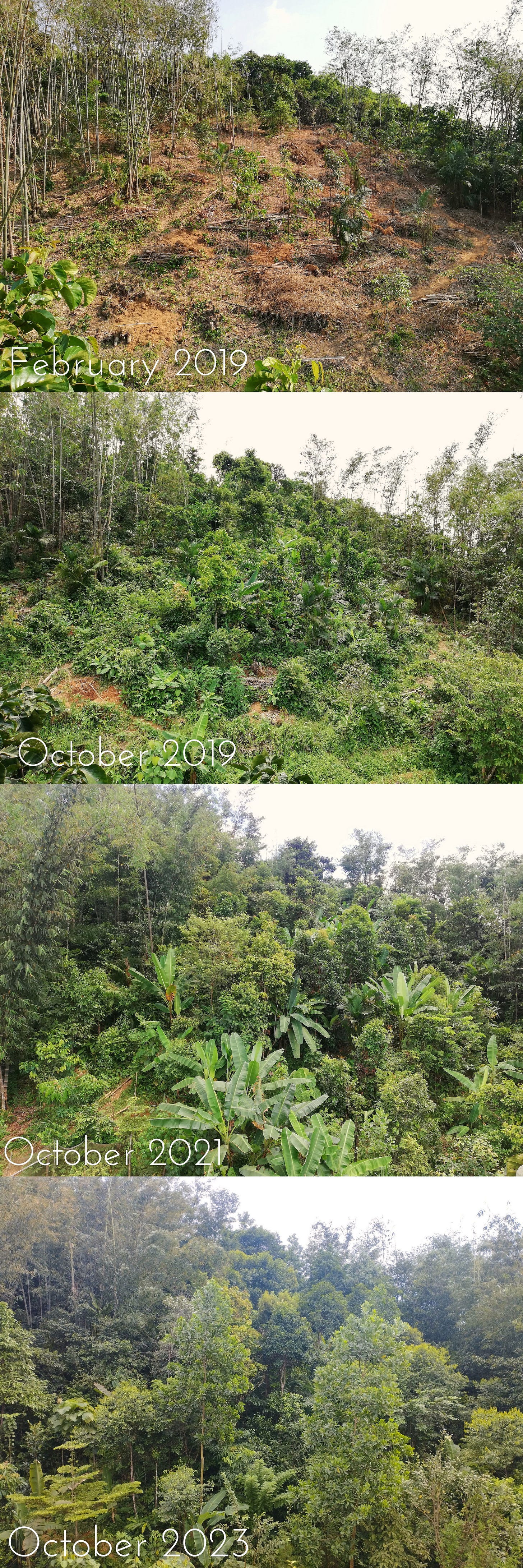



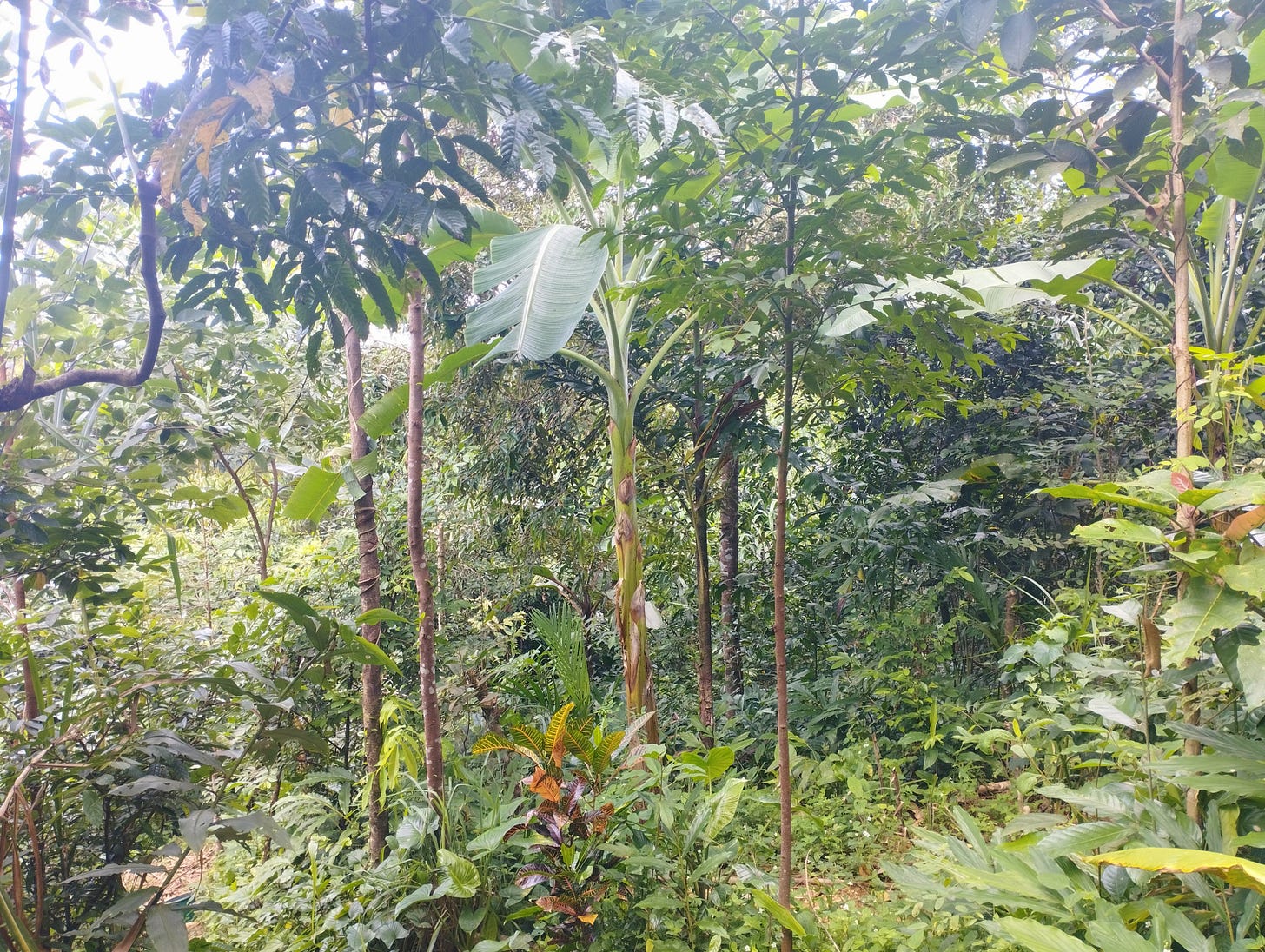
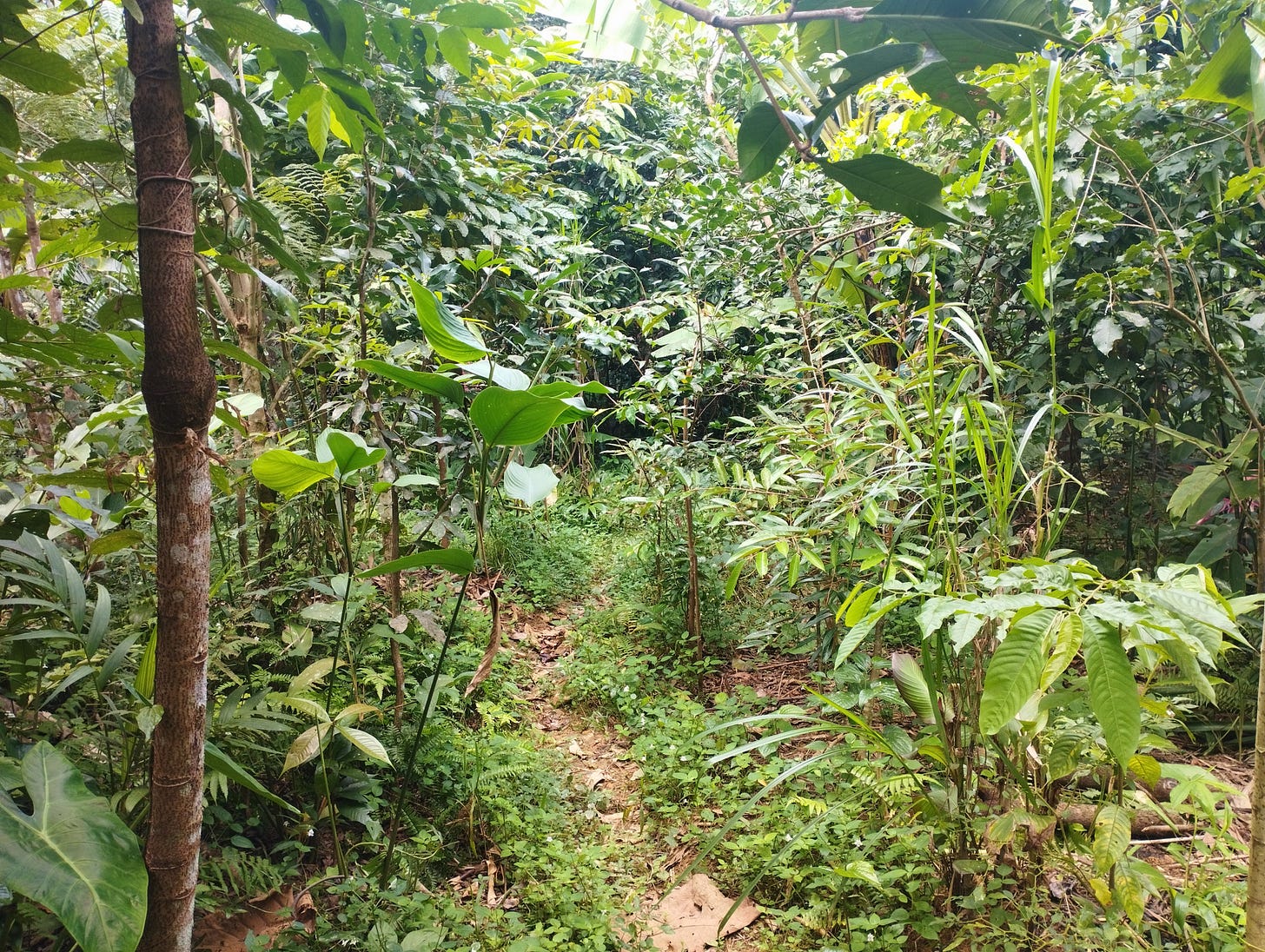

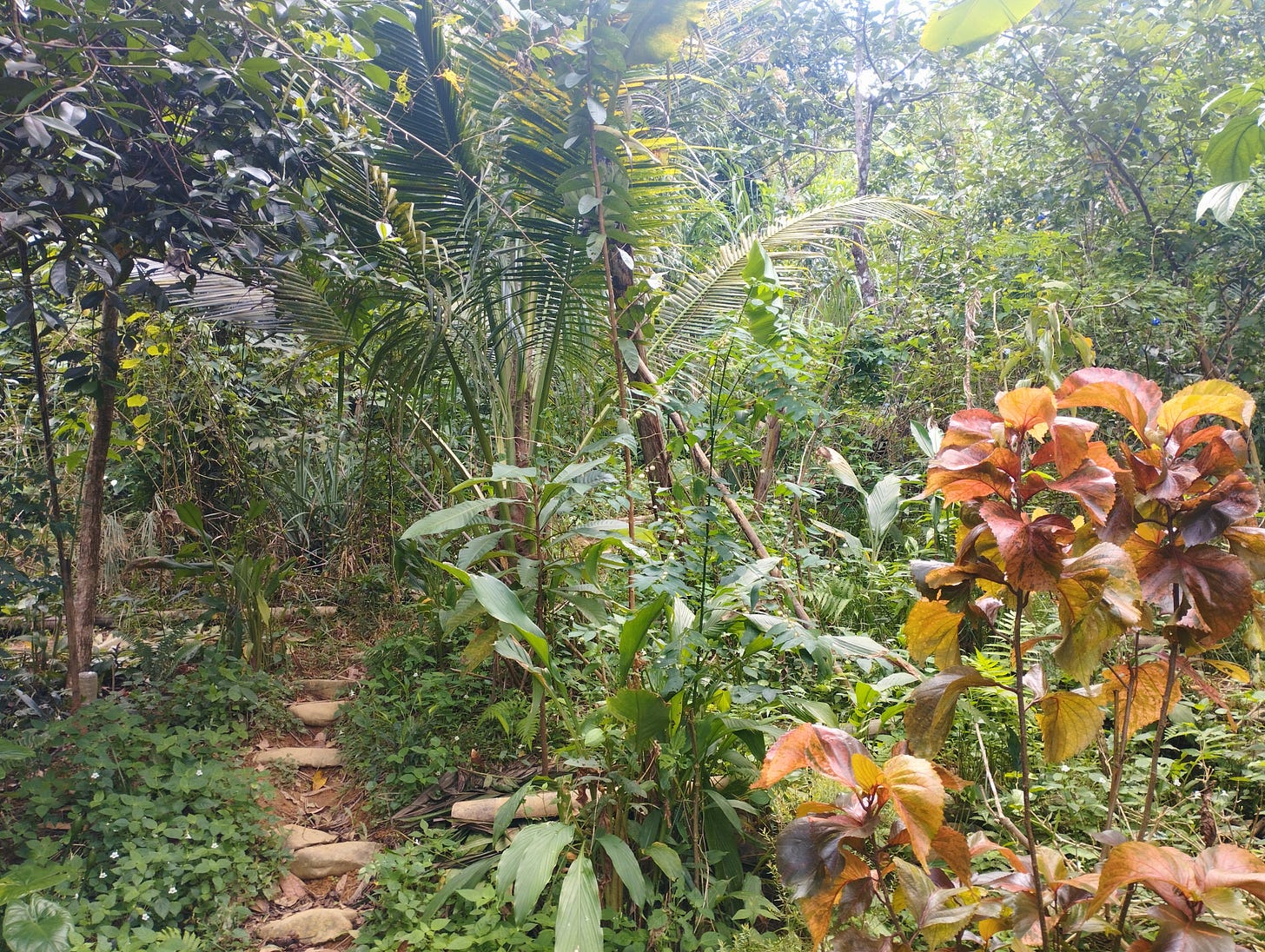

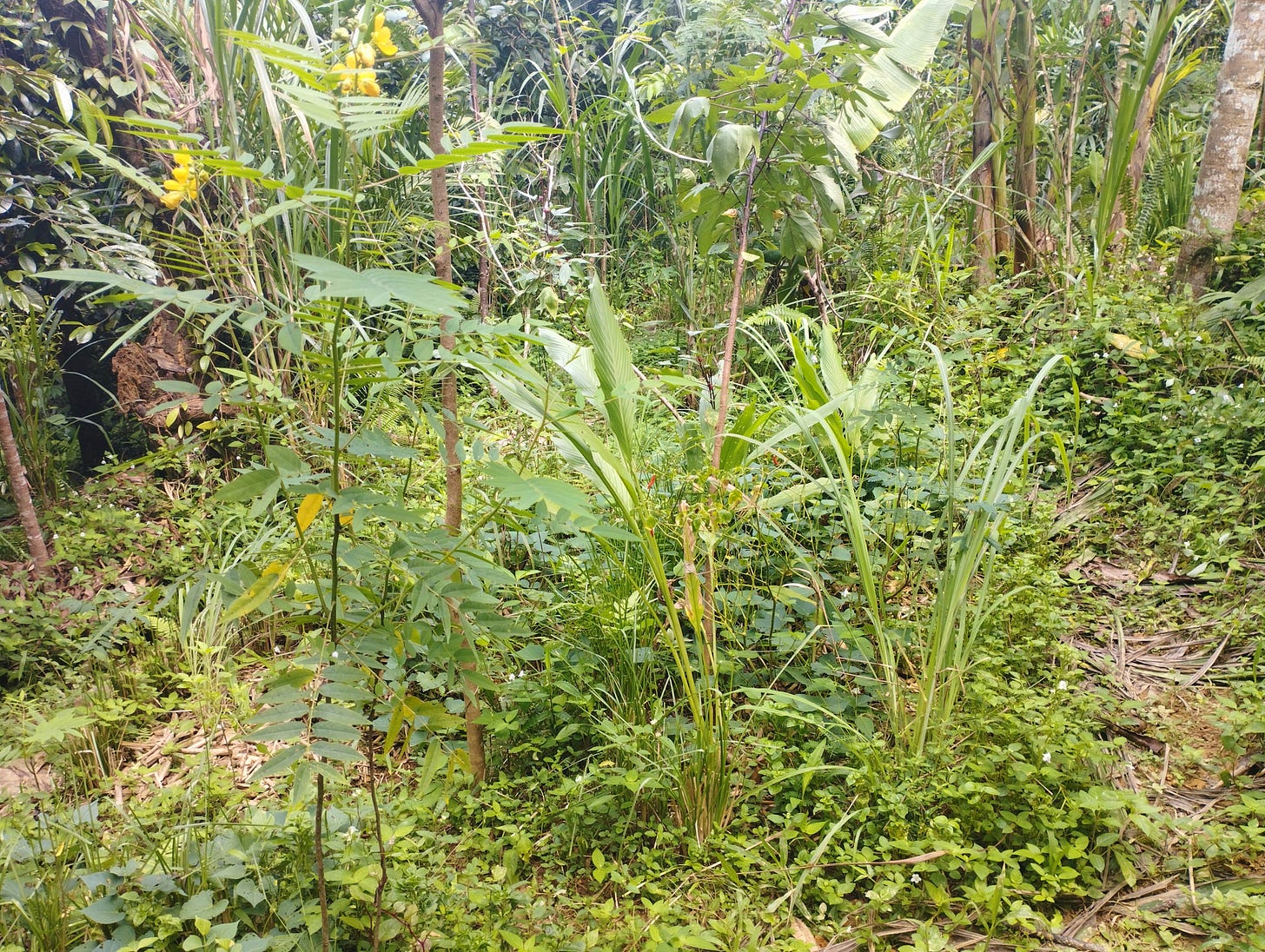

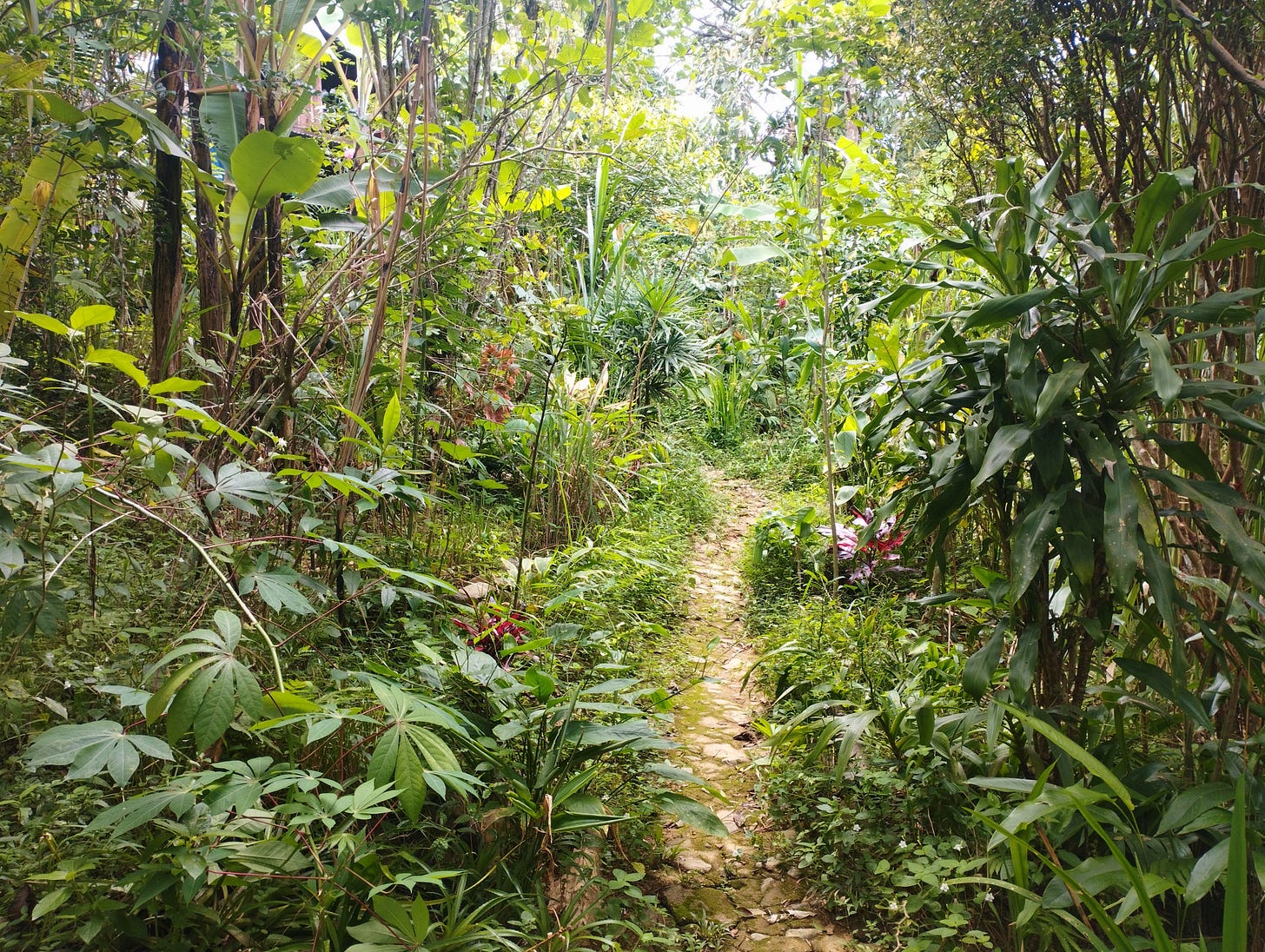
Always love sticky beaking other peoples places (without the horror of getting on a plane). You are doing amazing work.
My gawd yes the rainy season really wipes out all that mulching work. Even on our barely sloping property, if there’s a rain that over saturated the soil, we lose so much of it. My plan for this has been like yours but also to one day plant a lot more thick grasses to try and catch the sediment before it leaves the property. I did realise my neighbour puts his corn and veggie crops right in the area where most of our sediment leaves the property, so at least it’s not completely wasted 😂
Great update, looking good!